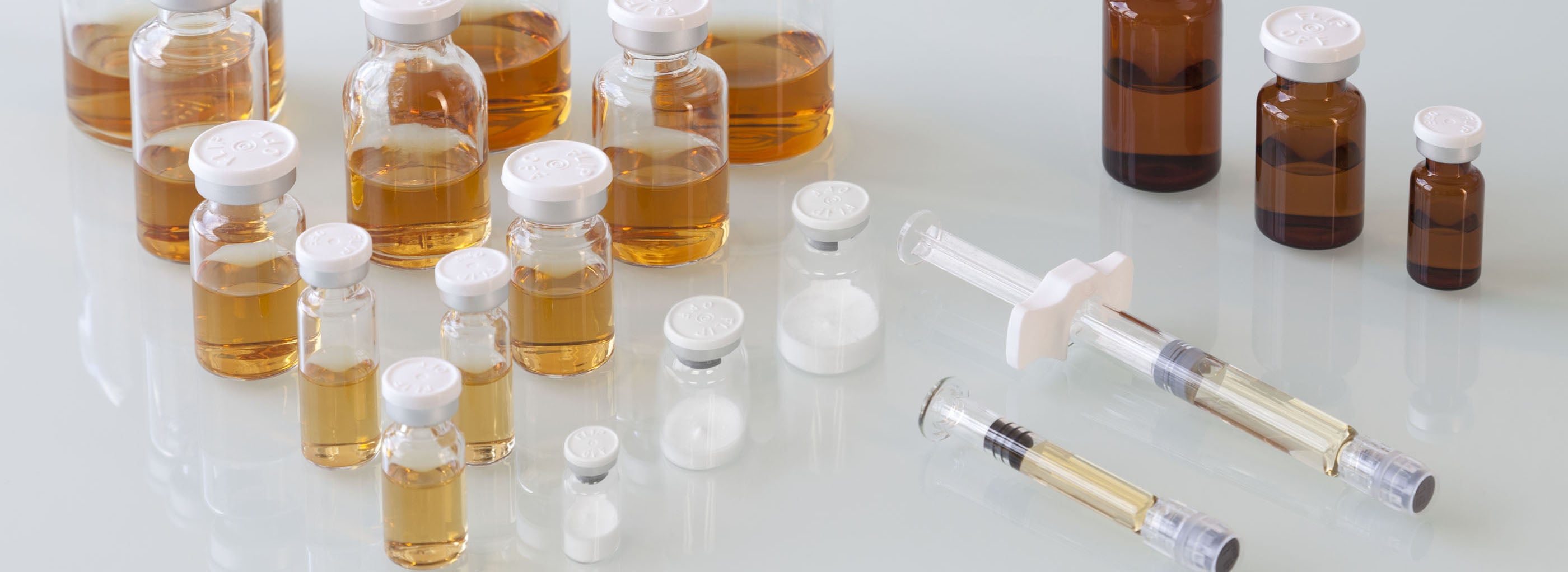
Our approach in Drug Product Development & Manufacture
An insight by Caroline Ailhas, Ph.D. - Project and Pharmaceutical Development Director at CARBOGEN AMCIS

At CARBOGEN AMCIS in Riom, France we are specialized in injectable drug products development and investigational medicinal products (IMP‘s) manufacture for clinical trials. We mainly focus on the formulation development of peptides or highly potent small molecules. The compounds are primarily new chemical entities (NCEs) and therefore, only little information is available concerning physicochemical properties. Usually, these molecules are poorly soluble and additionally, they can be sensitive to the environment such as oxygen levels, ambient temperature or aqueous media. During development work, all parameters which will be essential to develop a robust manufacturing process and a stable formulation need to be defined. Therefore we work on both, formulation development and process development.
Solvent selection is crucial to determine lead formulation
Usually, the formulation development work starts with defining the best solvent for molecule solubility followed by evaluating the pH range offering the highest stability. The goal of selecting the most suitable solvent is to achieve the highest solubility but also the longest stability over time.
This work is usually tricky as the potential solvents to be used for injectable are extremely limited. The solvent is mainly aqueous based, plus some excipients can be added to improve stability of the molecule. The selected excipient and quantity needed in the formulation will be further challenged during development to obtain the lead formulation. Studies on potential incompatibilities between the excipients used and the drug substance will be performed as well. All development work is supported by analytical methods which are usually adapted from the drug substance method.
Our approach differs for peptides since they tend to precipitate. Therefore the focus of the development work is on the pH range to ensure that the compound keeps its properties. The acceptable range can be extremely narrow as a variation of only 0.1 to 0.2 pH units can lead to a complete aggregation of the peptide. If the peptide is also at risk to hydrolyze, we develop a lyophilized dosage form for the drug product. To achieve this, excipients offering the longest possible stability to the peptide in solution need to be chosen. This enables us to perform the first steps of the manufacture where the molecule is still in solution, i.e. formulation and filling steps. It is important to choose excipients that are compatible with a lyophilization process. These excipients are cryoprotectants working as bulking agents which will protect the molecule from the temperature during the cycle and will structure the lyo cake formed during the freeze-drying process.
Defining a robust manufacturing process to use for clinical trials
Once the lead formulation is validated by the customer, the actual process development can start. This part of the development work focuses on the manufacturing process itself and includes the definition of the parameters for solution preparation, selection of the packaging components and also selection of the material used for manufacturing (e.g.tubings, needles etc.). All this shall lead to a robust manufacturing process. Potential interactions between the product and packaging components are examined and also the impact of the manufacturing duration on the product quality is an important point to look at. The obtained information will help to define the most suitable process for each specific compound. In addition to this work, in-use studies can be performed. Those investigate the stability of the product over time, after reconstitution or during preparation to simulate the process during the clinical trial. The generated data will support our customers to define or refine their clinical protocol.
Handling of Highly Active Compounds in a fully contained environment
As we are working on injectable drug products containing highly active molecules, two additional key points must be considered. The first one is the sterility management during the manufacture of the clinical batches and the second one is the containment of the molecule we are working with. It also needs to be considered, that these two points have a mutual influence on each other and a fine tuning has to be made in order to keep the balance between these two parameters. In fact, the containment strategy is critical for our business as it is directly linked to the protection of the working force.
At CARBOGEN AMCIS, containment is closely connected to the categorization of the molecule regarding its toxicity and the protection needed for our employees working with the compound. As a consequence, an assessment is performed before any project enters our pipeline to evaluate whether we meet all the requirements to work with the molecule. This might result in some adjustments required at our site or process wise in order to be able to properly handle the compound. As an example, this could be a decrease of the batch size to handle lower quantities of drug substance or the implementation of specific equipment. All containment decisions taken are always made keeping in mind the sterility management of the working environment.
With over 19 years of experience, we have gained the necessary expertise to safely develop injectables for a wide range of drugs including highly potent compounds and more recently, antibody drug conjugates (ADCs). Our trained and experienced employees operate in state-of-the-art containment facilities and can handle materials of the highest occupational exposure band, including cytotoxics. We aim to offer tailored formulations and robust drug product manufacture processes to our customers in order to support them to bring their project to the next clinical phase.